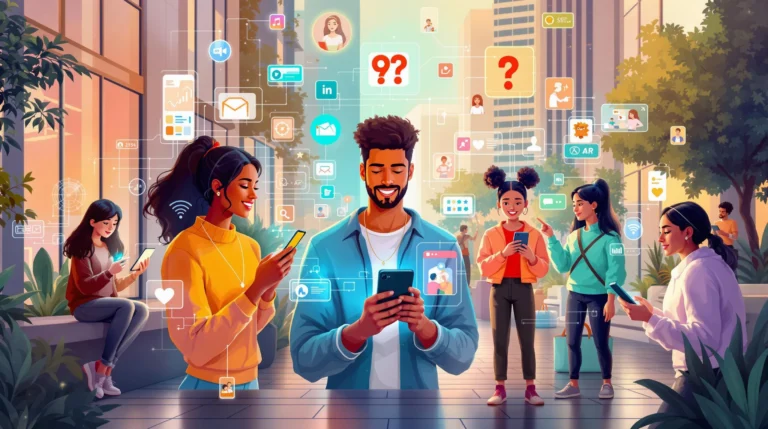In a world where anyone can share ideas instantly, user-generated content (UGC) has become one of the most powerful forces shaping public conversations. From social commentary to lifestyle hacks, from political discussions to personal reflections, digital communities are redefining how information spreads and how narratives take shape. This multi-topic feature highlights the themes most commonly emerging across online platforms — showcasing the diverse perspectives that color today’s digital landscape.
1. Lifestyle: The Rise of “Slow Living” in a Fast Digital Era
Across platforms like Instagram, TikTok, and community blogs, one of the most popular lifestyle trends is slow living. UGC creators are moving away from hustle culture, sharing instead snippets of peaceful mornings, journaling routines, homemade meals, and simple outdoor activities.slot gacor
Many users describe the shift as a reaction to burnout and the constant pressure of productivity. Rather than romanticizing chaos, they highlight balance: cooking from scratch, taking long walks, unplugging from work after hours, and spending more time on personal relationships.
The appeal of slow living lies in its relatability. Viewers gravitate toward real-life creators who share authentic experiences rather than curated perfection. As creators say, “It’s not about having a perfect life — it’s about being present in the one you already have.”
2. Technology: AI Tools Becoming Part of Daily Life
UGC discussions on technology have exploded, especially around artificial intelligence. Creators now commonly share prompts, productivity systems, and creative workflows that incorporate AI tools. Whether they use AI to design graphics, summarize textbooks, generate lesson plans, or create business branding, the tone of these conversations is pragmatic rather than fearful.
A growing number of young creators treat AI as an everyday tool — similar to how previous generations adopted smartphones. Tutorials explaining “How I use AI to save 10 hours a week” or “AI websites you should know” routinely go viral. This democratization of tech knowledge reflects a major cultural shift: expertise is no longer gatekept, and digital communities are actively teaching one another how to navigate the future.
Still, ethical concerns often surface. UGC creators raise important questions about data privacy, job displacement, and misinformation. Many encourage responsible use, verifying sources, and balancing AI-generated content with human creativity.
3. Personal Finance: The Budgeting Revolution
Finance creators — often ordinary people sharing their own struggles and systems — have sparked a wave of budgeting awareness online. From envelope-saving challenges to debt-free journeys, UGC has made financial literacy approachable.
What makes this movement powerful is vulnerability. People openly discuss their mistakes, fears, and successes. “I was never taught money management growing up,” is a common refrain. Seeing others learn late, fail, and try again motivates viewers to take control of their own finances.
Creators often emphasize small wins: saving the first $100, paying down one credit card, cooking at home three nights a week. This community-driven encouragement helps people feel less alone in what can otherwise be an isolating journey.
4. Culture & Entertainment: Nostalgia Is Making a Comeback
One of the most surprising UGC trends of the year is the return of nostalgia. Creators are posting content inspired by the 90s and early 2000s — old-school fashion, retro gaming, analog photography, and childhood TV shows.
The appeal is grounded in emotional comfort. Nostalgia offers a brief escape from the complications of adulthood and a reminder of simpler times.
Nostalgic UGC also bridges generations. Parents show their kids old cartoons; teens explore vintage gadgets; young adults rediscover music genres once forgotten. The past becomes a cultural playground, curated collaboratively by millions of creators.
5. Wellness & Mental Health: Community-Based Healing
More than ever, UGC spaces have become hubs for discussing mental health openly. Users share personal experiences with anxiety, ADHD, burnout, depression, and emotional healing. They post coping strategies, daily routines, therapy insights, or simply honest check-ins saying, “Today was hard, but slot gacor I’m here.”
This openness destigmatizes mental challenges and builds solidarity. The message shared by many creators: healing is not linear, and needing support is normal. Some creators also emphasize boundaries, encouraging users not to self-diagnose online and reminding them that professional help is important.
Ultimately, the rise of mental-health-focused UGC has created a rare digital environment where honesty and empathy drive engagement more than aesthetics.
6. Politics & Society: Young Voices Steering the Conversation
Political UGC has grown rapidly — not from official commentators, but from students, workers, and everyday citizens. Creators discuss economic inequality, climate concerns, workers’ rights, gender issues, and electoral participation. Unlike traditional political commentary, these discussions often center on personal impact: rent prices, job insecurity, school funding, discrimination, and community support.
Younger creators approach politics less as a distant spectacle and more as a lived experience. Their message is simple: politics is not only about government — it is about daily life. This perspective is reshaping engagement levels, with many young people saying they feel more informed because content is delivered by relatable voices, not institutions.
7. Creativity: Ordinary People Becoming Digital Artists
UGC has expanded the definition of an “artist.” With easy access to phone cameras, editing apps, and digital tools, everyday people now experiment with photography, animation, music mixing, journaling, and fashion design.
The creative renaissance is driven by community encouragement: people try new hobbies because others cheer them on.
This culture of shared creativity challenges the idea that art must be perfect or professional. Instead, creativity becomes a universal language — a way for people to express emotion, identity, and curiosity.
Conclusion
The beauty of multi-topic UGC is that it reflects real life: messy, diverse, and full of overlapping interests. Through online communities, people share not only information but also emotion, support, ideas, and solidarity. Together, these voices paint a vibrant picture of how society is evolving — one post, one comment, one story at a time. UtdPlug
